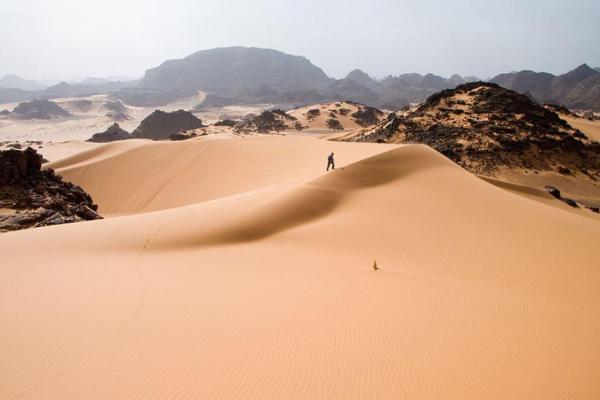
March 31 (UPI) — Africa’s Sahara Desert has grown 10 percent in nearly 100 years, according to a new study by scientists at the University of Maryland.
The Sahara, which is the world’s largest warm-weather desert and roughly equal in size to the contiguous United States with 3.6 million square miles, has expanded by 11 percent to 18 percent depending on the season.
The study was published Thursday in the American Meteorological Society’s Journal of Climate.
The researchers analyzed annual rainfall data recorded throughout Africa until 2013. When the average rainfall is less than 4 inches of rain per year or less, an area is considered a desert.
“The trends in Africa of hot summers getting hotter and rainy seasons drying out are linked with factors that include increasing greenhouse gases and aerosols in the atmosphere,” Ming Cai, a program director in National Science Foundation’s Division of Atmospheric and Geospace Sciences, which funded the research, said in a press release. “These trends have a devastating effect on the lives of African people, who depend on agriculture-based economies.”
The biggest increases occurred during summers, when the Sahara increased 16 percent over the 93-year span. As is the case with other deserts, the boundaries of the Sahara fluctuate between dry winters and wetter summers.
The largest differences occurred along the Sahara’s northern and southern boundaries.
The researchers believe one-third of the expansion can be attributed to human-caused climate change and the remaining two-thirds associated with climate cycles.
“Deserts usually form in the subtropics because of what’s called Hadley circulation, through which air rises at the equator and descends in the subtropics,” senior author Sumant Nigam, an atmospheric and ocean scientist at Maryland, said. That circulation has a drying effect. “Climate change is likely to widen this Hadley circulation, causing the northward advance of subtropical deserts. The southward creep of the Sahara suggests that additional mechanisms are at work.”
Researchers want to further explore those potential causes.
“Our next step will be to look at what’s driving these trends, for the Sahara and elsewhere,” lead author Natalie Thomas, a researcher at Maryland, said.
Because of less land with adequate rainfall, the researchers said it will have devastating consequences on growing crops.
“We’ve already started looking at seasonal temperature trends over North America, for example.” Thomas said. “Here, winters are getting warmer but summers are about the same. In Africa, it’s the opposite — winters are holding steady but summers are getting warmer. So the stresses in Africa are already more severe.”
Lake Chad is a semi-arid transition zone between the Sahara and fertile savannas farther south.
“The entire Chad Basin falls in the region where the Sahara has crept southward, and the lake is drying out,” Nigam said. “It’s a very visible footprint of reduced rainfall not just locally, but across the whole region. It’s an indicator of declining water in the Chad Basin.”



